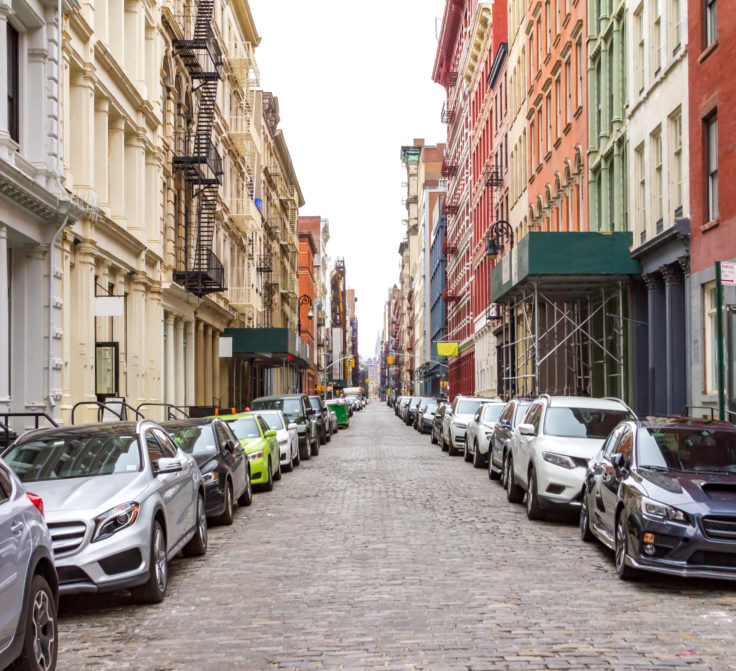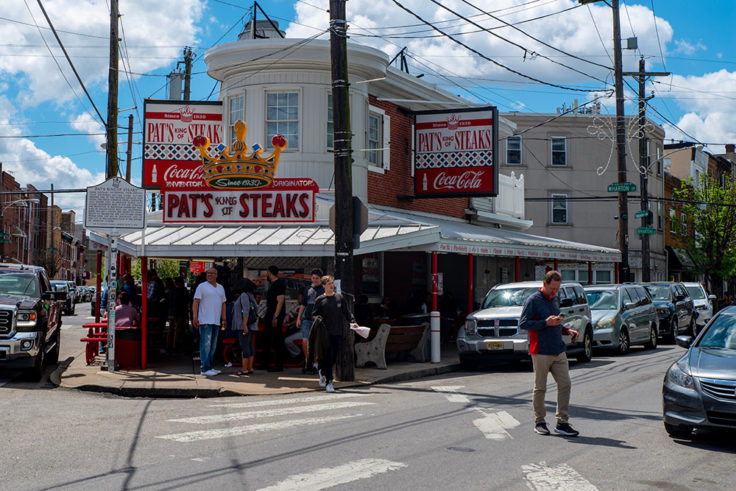
December 02, 2020
Taking Back the Curb, One Restaurant at a Time
While hope about an impending vaccine glimmers in the future, the coronavirus still rages on. The toll the pandemic has taken on people’s lives and health will be difficult to measure for a long time coming, but there is no question that our livelihoods and norms have changed. One hopeful outcome has been the willingness of cities to make changes beneficial to sustainable transportation: to reclaim space from cars.
During the virtual MOBILIZE Summit in October, attendees and speakers – city officials and policy makers alike – engaged in many discussions spanning racial justice in urban planning, freight policy, and how to “green” streets worldwide. The global pandemic came up; from its effect on depleting municipal budgets, to its effect on car sales, which are up. However, one positive effect stood out: the urgency ushering in fast, and painless, changes.

Much of the work of municipal changes is mired with budget meetings, surveys, planning meetings, proposal – the work to plan a sidewalk expansion can take longer than the actual laying out of the concrete. One of the (perhaps not so) surprising outcomes of the pandemic is the process through which these changes take place. Due to the urgent nature of needing to make changes quickly, cities have been able to address them quickly and without the red tape or the typical backlash often encountered from residents.
Take Philadelphia for example, like most Americans, people in Philadelphia might be described as being addicted to their cars. This addiction is partially fueled by the readily available street parking. However, finding a legal parking spot is such a challenge that people often fight viciously to keep and expand parking spaces. However, a fascinating story came about this summer: when restaurants took over the coveted parking spaces, nobody took issue. Rather than engage in their typical behavior – to fight to keep the spots – residents and patrons supported the move recognizing that it was the only way to support the restaurants while maintaining safe protocols. NIMBY-ism took a back seat to the reality of the pandemic: the parking spots were the necessary sacrifice for the restaurants’ survival.

Throughout MOBILIZE, city officials provided similar examples. In Mexico City, the largest avenue, Avenida de los Insurgentes, has created a temporary cycle lane that, if made permanent, could be the longest bike lane in the whole world. Residents have flocked to the new cycle lane with enthusiasm, explaining how much nicer and safer it was to cycle there and have responded resoundingly in support for a permanent cycle lane.
In New York City, the need for outdoor dining has also led restaurants to take over typically coveted parking spots. This has, again, been met with resounding success. Some like, public health officials and sustainable mobility advocates, are obvious advocates of this shift, but it has gained support among restaurant owners and patrons as well. It feels like almost everyone is so relieved to be able to enjoy a semblance of normalcy and support businesses, even the press is enthusiastic about the recent permanence of outdoor dining in New York. Every week there seem to be more journalists and editors positing the benefits of open streets and the removal of cars throughout the city.
Much of the success of the removal of parking spots might have to do with the framing of the issue: restaurants need patrons to serve, patrons cannot safely be served inside, therefore the sidewalk and parking space in front of the restaurant are the only safe location for the restaurant to expand to survive. The response from patrons mimics that urgency: to survive the restaurants need this space. Residents can see how much more valuable, useful, and accessible the urban space is with the exclusion of free car storage. Even restaurant critics mention the value of having the space for the people of New York. Sustainable transportation advocates have pushed for the removal of free parking for many years, but this argument succeeded differently for two reasons. First, there was an urgency that was easy for people to grasp; second, due to the drastic changes that cities underwent as a result of the pandemic, people could see more clearly the benefits of open streets. People care about keeping their favorite businesses afloat, so the pressing need for change was easy to accept. Now that people see how many more ways their parking spaces can be used, they can begin to reimagine their cities. In some ways, Covid-19 has ushered in an era of extreme, and completely subtle, tactical urbanism.
If people saw the threat of cars to climate change, air pollution, and road safety with the same need as they saw dining in restaurants, perhaps they would respond more enthusiastically to open streets plans. The pandemic has ushered in an era where more changes can be made, with more flexible responses to problems. With hope, many of the changes that have begun to take place can be further enacted. Temporary changes can be made permanent and the pandemic can lead to important and necessary changes that can create more sustainable futures for our cities.



